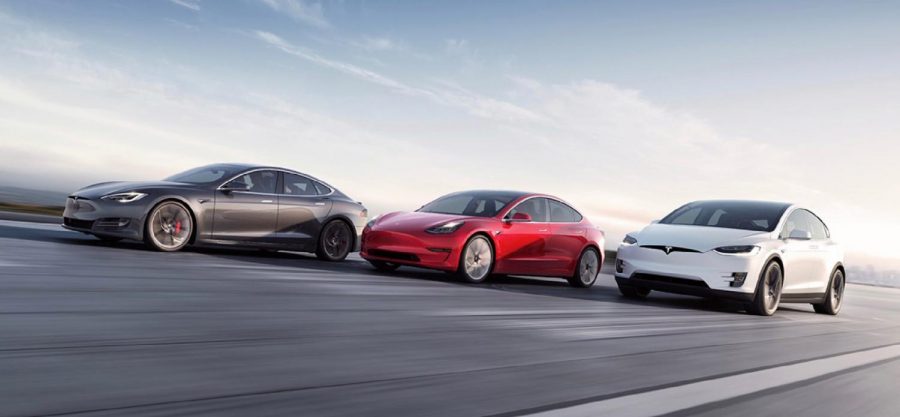The Truth about Tesla
As the new Tesla cyber trucks were recently unveiled, I started thinking about Tesla and electric cars in general. To be more specific, I was curious about their overall impact on the environment. I honestly started with a more biased opinion based on some research I had discovered a few months ago after the Youth Climate March. The information that I read explained that the production of electric cars is fossil fuel dependent and that the entire process produced a significant amount of emissions. I became very curious about this and proceeded to look at statistics concerning the topic. I found out that all-electric vehicles produce a significantly higher amount of emissions during production in comparison to gasoline-powered vehicles. (Which I found from a report called “Cleaner Cars from Cradle to Grave” written by the union of concerned scientists.) After I learned that, I stopped researching (which was my mistake.) Since what I found ended up being true, in turn, I started to think these electric car companies were lying to us and I grew, at the very least, a little upset. So when I first decided to write this article, I was feeling a little biased and my ultimate goal was to expose the lying car companies that were not helping the environment as they said they were. Understanding I already had a negative opinion of these companies, I decided to hone in on one that has gained a lot of notoriety recently. So I searched for raw facts and completely unbiased opinions regarding emissions. What I learned from my research is that it’s a lot more complicated than what I previously thought.
According to Tesla’s mission statement on its website, “Tesla was founded in 2003 by a group of engineers who wanted to prove that people didn’t need to compromise to drive electric – that electric vehicles can be better, quicker and more fun to drive than gasoline cars. Today, Tesla builds not only all-electric vehicles but also infinitely scalable clean energy generation and storage products. Tesla believes the faster the world stops relying on fossil fuels and moves towards a zero-emission future, the better.”
Tesla believes that to take the next step into the future of technology, we have to progress as a society and stop relying on fossil fuels to carry our lifestyles. Their goal is to promote the idea that natural and renewable energy can still be sleek, modern, and luxurious. Its final goal is a future with zero emissions.
I started from the beginning with basic data about car production, comparing electric and non-electric cars. It turns out the engine used in electric cars produces 15-70 % more emissions. This information and more is available in the report mentioned previously. (The wide margins are due to varying research but they do not affect the outcome of the data, I ended up calculating for both.)
According to “The Global Warming Policy Forum’s study of CO2 emissions from electric car batteries” and The “Green Vehicle Guide” about 4.6 Metric Tonnes of CO2 is produced in average vehicle production. The Department of Energy compiles emissions from hybrid and plug-in vehicles again in comparison to other more traditional cars. All of this can be calculated for accuracy quite easily as well. Even though the emissions released in production is significantly higher, in about 3.6-5 years the emissions produced can be made up by producing fewer emissions over all. This is because when driving an electric vehicle you produce less emissions. Please consider the following example which could better explain my point, and demonstrates my previous thinking: Let’s say there are two people, and they both have traditional gasoline dependent cars; one day Person Two decides they want to lower their carbon footprint (or maybe they just like Tesla vehicles), so they buy a Tesla. I originally thought that if Person Two were to do this, it would be just as bad for the environment as if they stayed with their old car. I was under the impression that their emissions would end up being the same in the long run due to manufacturing the new car. I stand corrected. If Person One sticks with their old car, Person Two will be producing significantly fewer emissions and will make up the difference from the engine production within 3.6-5 years in general.
I say “in general” because, at least in the United States, your personal impact on the environment varies depending on what state you are in. (For an in-depth explanation, all of this data, and multiple charts can be found on the U.S Department of Energy’s website.) According to the national average on annual emissions per type of vehicle on the Department of Energy’s website, the average annual emissions for all cars bought, sold, and used in the U.S are about 7.85 thousand metric tonnes. This is due to the high amounts of plug-in, hybrid, and all-electric vehicles bought in recent years which are rapidly working to decrease this number. The more energy-efficient vehicles all produce about 5.2 thousand metric tonnes, with all-electric cars producing less than 5. Gasoline cars produce over 10.5 thousand metric tonnes alone.
According to the Energy Efficiency and renewable energy page of the U.S department of Energy’s website. If you were to look at emissions in a specific state, your impact would vary. For example, if you were to live in a very coal-dependent state like West Virginia, your positive impact would be significantly lower. Your positive impact from driving a Tesla in West Virginia would be almost zero as your emissions would be about 1500 metric tonnes shy of a gasoline vehicle. This is due to West Virginia relying on coal for 93.08% of their electricity sources. If you drive a large electric car in West Virginia it will take you 17.8 years to make up your emissions, which is well over the car’s average life span. Therefore driving a Tesla in West Virginia will be doing virtually nothing, you might as well save the money and stick with your old car. In comparison, if you were to live in a more renewable energy-dependent state such as Idaho, with 59.71% of their electricity sources being hydroelectric, natural gas, wind, and solar, being the second, third, and fourth largest sources, you’d be making a much larger difference. Against all other cars, all-electric vehicles produce next to no emissions in Idaho. This is because less than 1% of their electricity sources are coal and zero oil is used. However, gasoline powered vehicles are still above 10,000 metric tonnes.
After reading all of this data, it became clear that it is not better to drive a gasoline-powered vehicle in any state in the U.S. On the other hand, it’s not the best to drive all-electric cars in every state either. In some states it’s best to drive a hybrid or plug-in vehicle. In states like Texas, Alaska, Florida, and Nevada, it’s better to drive a plug-in vehicle. In states like New Mexico, North Dakota, Michigan, Utah, Rhode Island, and Kentucky it’s better to drive a hybrid. It’s better to drive all-electric in most states, such as Idaho, California, Virginia, Louisiana, Maryland, Maine, and South Dakota. So, if you are thinking about buying a car anytime soon or in a few years, and your environmental impact is something you’re trying to take into consideration, check the Department of Energy’s website for what’s best to drive in your state. You can also be proud because if it’s better to drive an EV in your state, it means your state is producing fewer emissions in the long run.
In conclusion, the truth about Tesla and its impact on the environment is pretty true to what they say. They are helping people around the world lower their carbon footprint and produce fewer emissions. Tesla is clearly working for a cleaner, greener Earth which is hopefully a cause we can all get behind.
Hi, I’m Chandler. I’m a senior and the Literary Magazine and Arts Editor at Wildezine. This is my fourth year on Wildezine and my 13th year at SSFS....










